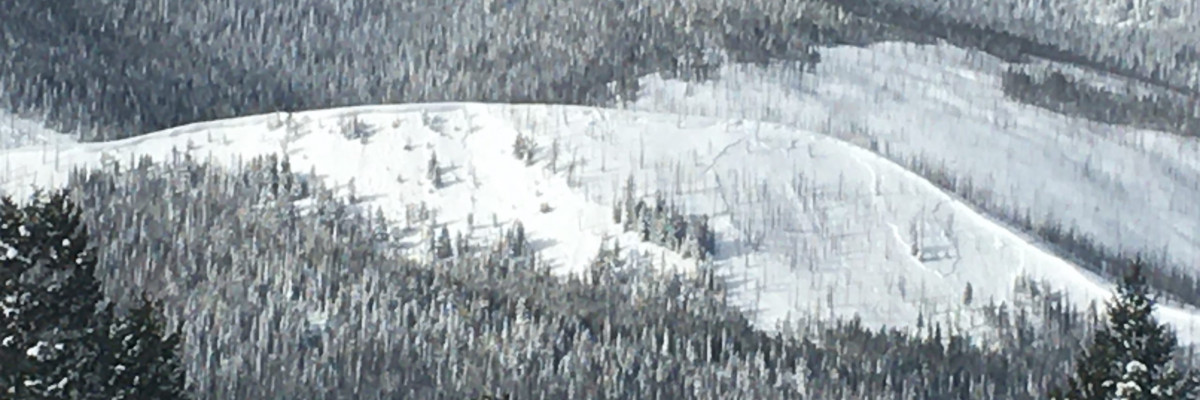The avalanche danger in the west central Montana backcountry is CONSIDERABLE. New snow and wind are creating dangerous avalanche conditions.
Good Morning. This is Travis Craft with the West Central Montana Avalanche Center advisory on Tuesday, February 16, 2021. This advisory is sponsored by LB Snow. This advisory does not apply to operating ski areas and expires at midnight tonight. The USDA Forest Service is solely responsible for its content.
Weather and Snowpack
Mountain temperatures range from 17 degrees to 28 degrees F this morning. Snotels are reporting between .4 and .7 SWE for the last 24 hours. Winds are predicted today to be out of the west and 20 mph.
The best way to breakdown our problems is into 3 types. New snow, old snow, and wind drifted snow.
The new snow is heavier and not bonding to the light snow underneath from this weekend. The new snow is easily triggered on all aspects. In the central Bitterroot, Rattlesnake, and southern Bitterroot, we saw several small sluffs and experienced cracking from skis and machines in the new snow.
Winds picked up later in the day and overnight. Wind slabs were easily triggered yesterday on ridges lines in the Rattlesnake, central Bitterroot and near Lost Trail Pass. These slabs are continuing to grow and will be easily triggered today. Cornices are increasing in size and should be given a wide berth.
The new snow is loading weak layers in our snowpack. We experienced collapsing in elevations from 6000 ft to 7000 ft yesterday near Gash Point in the central Bitterroot and near Lost Trail Pass. We saw evidence of slides over the weekend that failed on the Jan 13 crust in the Rattlesnake and the southern and central Bitterroot. There are facets that are failing easily in the Rattlesnake about a foot down in the snowpack. Here is video link.
There is a lot of spatial variability from drainage to drainage and slope to slope. Today avoid traveling under or on wind-loaded slopes. Choose slopes less than 30 degrees that are sheltered from the wind and not attached to steeper terrain. Avoid slopes with shallow, weak snowpacks. Use hand pits and small test slopes to see how the new snow is bonding to old snow surfaces. Pay attention to changing weather conditions. Stay alert when changing aspect and elevation to the changes in snowpack’s depth and structure.
Over the weekend, there was an avalanche death near Beehive Basin, North of Big Sky. Our sincere, heartfelt condolences go to the family and friends of those involved. Here is more information from the Gallatin National Forest Avalanche Center.
The Bottom Line
We have multiple snow problems (New snow, Old snow, and Wind drifted snow). Terrain is the way to combat all of these. Choose slopes less than 30 degrees that are sheltered from the wind and not attached to steeper terrain. Build in larger safety margins. Keep it simple with uniform slope choices. Avoid likely trigger points on slopes. Do not travel under steep slopes because you can trigger an avalanche from above, the side, or below.
Carry a beacon, shovel, and probe. Remember to reassess conditions throughout the day and stay alert for signs of instability. Dig a pit. Look for red flags.
Upcoming Education Events
Please visit our education page for an up to date list of regional educational events and course offerings. Below are a few select events and opportunities to check out.
- February 17th, 6-7:30 PM MST | FREE Online 1.5-hr Avalanche Awareness Session | Missoulaavalanche.org event | Delivered by A3 Pro instructors | Get more details and register HERE
Public Observations
Thank you to everyone who has taken the time to send in a public observation. Please keep sharing what you find and see while out in the backcountry. This online forum is a great resource to glean information about current conditions.
You can now text us your observations to (406) 219-5566 when you don’t have time to fill out the observations page. Texted observations won’t get posted on the website, but will be used in the development of the forecast.
Ski and ride safe.
























